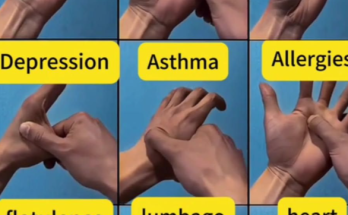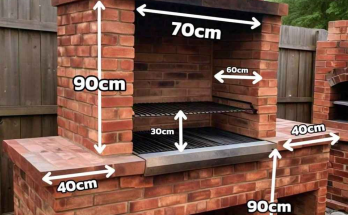
Introduction: Capturing the Reader’s Trust (Approx. 200 words)
As a professional website writer specializing in the home services industry, your primary goal is to build trust and authority with your audience. For a rug cleaning company, this means demonstrating expertise, transparency, and a genuine care for the customer’s prized possessions. Forget the generic, keyword-stuffed content; your writing needs to be a valuable resource.
Begin the “Rug Cleaning Tutorial” with a compelling hook. Start by acknowledging the unique stories a rug holds—the memories of family gatherings, the imprints of a child’s first steps, the warmth it brings to a living space. Acknowledge that a rug is not just a floor covering; it’s an investment, a piece of art, and a part of the home’s soul.
From there, gently introduce the need for professional cleaning. Mention the invisible enemies: deep-seated dirt, allergens, pet dander, and stubborn stains that a simple vacuum can’t reach. Position the company not just as a cleaning service, but as a preservation service—a team dedicated to extending the life and beauty of these cherished heirlooms. The tone should be empathetic and knowledgeable, setting the stage for a detailed, trustworthy tutorial.
Section 1: Understanding Your Rug (Approx. 300 words)
Before any cleaning can begin, a professional must understand the rug itself. This section of the website content is crucial for demonstrating expertise. As the writer, you will break down the fundamental aspects of rug identification that inform the cleaning process.
- Fiber Composition: Explain the difference between natural fibers (wool, silk, cotton, jute) and synthetic fibers (nylon, polyester, polypropylene). Detail why a wool rug requires a different approach than a synthetic one, mentioning the risk of shrinkage or color bleeding with improper methods. This shows the reader you don’t use a one-size-fits-all approach.
- Construction Method: Describe the various ways rugs are made—hand-knotted, hand-tufted, flat-woven, machine-made. Explain how the construction dictates the cleaning technique. For example, a hand-knotted Persian rug demands a gentler, more delicate process to protect its intricate knots, while a durable, machine-made rug can withstand a more robust cleaning.
- Dyes and Colorfastness: Address the critical issue of color bleeding. Explain that testing for colorfastness is the first step in any professional process. This gives the client peace of mind that their vibrant colors will remain intact.
By educating the customer on these factors, you empower them with knowledge while simultaneously showcasing your company’s deep understanding of the craft. Use clear, non-technical language to make this information accessible to everyone.
Section 2: The Professional Cleaning Process – A Step-by-Step Tutorial (Approx. 600 words)
This is the core of the tutorial. As a writer, your job is to translate a complex, multi-stage process into an easy-to-follow narrative. Structure this section as a numbered or bulleted guide, mirroring the actual steps taken by the cleaning professionals. Each step should be explained in detail, emphasizing the ‘why’ behind the ‘what.’
- Pre-Inspection and Dye Test: Start with the initial consultation. Explain that a technician will thoroughly inspect the rug for pre-existing damage, stains, and potential issues. This is where they will perform the colorfastness test, a non-negotiable step for any reputable cleaner. This step highlights the company’s commitment to safety and quality control.
- Dry Soil Removal (Dusting): Describe the importance of this often-overlooked step. Explain that a professional cleaning facility uses specialized equipment, like a rug duster or a “beater bar,” to meticulously remove dry soil, grit, and dust from the foundation of the rug. Compare this to a home vacuum cleaner, which only removes surface-level dirt. The visual of “years of embedded dirt being gently loosened and removed” is a powerful image.
- Washing – The Immersion Method: This is the heart of professional cleaning. Explain the benefits of full-immersion washing. Describe how the rug is placed in a shallow pool of water, where it is gently washed with a pH-balanced, non-toxic cleaning solution. Mention the use of soft brushes to agitate the fibers and release trapped dirt. This method ensures every fiber, from top to bottom, is thoroughly cleaned without causing damage.
- Rinsing: Detail the importance of a complete and thorough rinse. Explain that all soap and dirt must be flushed from the rug to prevent re-soiling and residue build-up. This is where a professional facility’s powerful rinsing tools come into play, leaving the rug clean and free of any sticky residue.
- Drying: Discuss the critical nature of the drying process. Explain that professional facilities use controlled environments with proper air circulation and dehumidification to dry the rug quickly and completely. This prevents mold, mildew, and unpleasant odors, which are common risks with improper home drying methods.
- Finishing Touches: Conclude the tutorial with the final steps. Mention the careful grooming of the fringe and the final post-cleaning inspection. Explain that the rug is then rolled and prepared for return, ready to bring beauty and warmth back to the client’s home.
Section 3: The Dangers of DIY Rug Cleaning (Approx. 200 words)
To reinforce the value of professional service, it’s essential to address the pitfalls of a DIY approach. This section should be educational, not condescending.
- Risk of Fiber Damage: Explain how using the wrong cleaning solution (e.g., harsh chemicals) can permanently damage delicate fibers like wool or silk.
- Color Bleeding and Migration: Highlight the danger of using hot water or aggressive scrubbing, which can cause dyes to run and ruin a beautiful rug.
- Residual Residue: Warn against the common problem of leaving soap residue behind, which acts as a magnet for new dirt, making the rug get dirty faster than before.
- Mold and Mildew: Explain that without a controlled drying environment, a damp rug can quickly become a breeding ground for mold, posing a health risk and creating an irreversible odor.
By presenting these facts, you position the professional service as a safer, more effective, and ultimately, more cost-effective alternative to a risky DIY attempt.
Conclusion: A Promise of Quality and Care (Approx. 200 words)
Wrap up the tutorial with a strong, reassuring conclusion. Summarize the key benefits of a professional rug cleaning service: a deep, thorough clean; the preservation of the rug’s fibers and dyes; and the peace of mind that comes from entrusting your cherished item to experts.
Reiterate the company’s commitment to quality, its use of specialized equipment, and its deep knowledge of various rug types. End with a clear and inviting call to action. Invite the reader to get a free quote, schedule a consultation, or simply call to learn more. The final tone should be confident, friendly, and professional, leaving the reader with no doubt that they are in the best hands. The website content, in its entirety, should serve as both an educational resource and a powerful marketing tool, cementing the company’s status as the definitive authority on professional rug cleaning in the US


